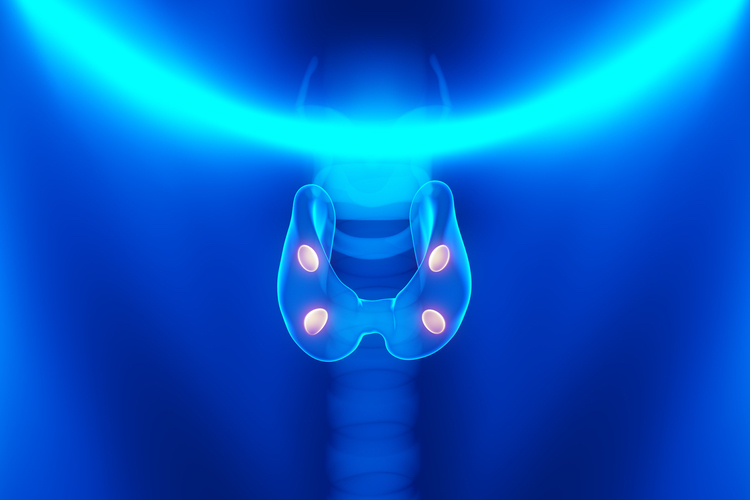Parathyroid Glands: Facts, Function & Disease

Though they are small, the parathyroid glands are big players in the endocrine system. They have a very important purpose: keeping bones strong, the nervous system running and the muscles pumping.
The parathyroids are four mustard-colored glands that function as one. They are located behind the thyroid, which is a gland that stretches across the front of the neck, below the voice box. Each parathyroid gland is around the size of a pea, or 3 to 5 millimeters in diameter and 30 to 60 milligrams in weight, according to the University of Michigan.
Function
While the names are similar and they are physically near each other, the functions of the thyroid and the parathyroid are unrelated. The parathyroids release parathyroid hormone (PTH), which regulates how much calcium is in the blood. In fact, calcium is the only mineral in the body that has its own dedicated regulatory gland.
Calcium is important for many reasons. Most people know that it helps with bone strength, but it is also used to conduct electrical impulses in the nervous system and is used as energy in muscle cells.
Bones store calcium that can be used in the body. When blood calcium levels are low, the parathyroids signal to the bones to release calcium into the bloodstream. If calcium is not replenished through a healthy diet, the loss of calcium in the bones can lead to bone deterioration.
PTH also signals the kidneys and small intestines to save calcium from digestion, instead of letting it get released in urine.
Diseases & conditions
There are several conditions that can affect the function of the parathyroid glands. One condition is growths on the glands. Around 1 in 100 people of all ages and 1 in 50 in women over 50 develop a tumor on this gland in their lifetime, according to the Norman Parathyroid Center. In most cases, the tumor is non-cancerous, and these growths are called parathyroid adenoma. About 10 percent of parathyroid adenoma cases are thought to be hereditary, according to the Cleveland Clinic.
A growth can cause a disease called hyperparathyroidism. Hyperparathyroidism causes the gland to make too much PTH, which creates high levels of calcium in the bloodstream. This can cause many malfunctions in the body.
"Parathyroid disease is a curable cause of kidney stones," said Dr. Melanie Goldfarb, an endocrine surgeon and director of the Endocrine Tumor Program at Providence Saint John's Health Center in Santa Monica, California, and an assistant professor of surgery at the John Wayne Cancer Institute in Santa Monica.
Treatment is the surgical removal of the growth by removing the affected gland. Luckily, this usually doesn't result in poor health. "You only need a half of a gland for complete function," said Goldfarb.
Other conditions caused by a malfunctioning parathyroid gland are hypoparathyroidism, which is when the gland creates too little parathyroid hormone, and hypercalcaemia, which is when the gland creates too much hormone. Hypoparathyroidism is rare, but is easily treatable with vitamin D and oral calcium tablets.
Hypercalcaemia typically isn't treated unless it starts causing problems. Treatment can include various medications: calcimimetics to control overactive parathyroid glands, bisphosphonates to rebuild bone weakened by hypercalcemia and prednisone to lower high levels of vitamin D. IV fluids and diuretics may be used if there are extremely high calcium levels in the body to prevent heart rhythm problems or damage to the nervous system, according to the Mayo Clinic.
Promoting good parathyroid health
The best thing a person can do to aid the parathyroid glands is to eat a healthy diet that contains calcium and vitamin D, since vitamin D aids in the absorption of calcium. Good sources of calcium include:
- Milk
- Cheese
- Yogurt
- Kale
- Watercress
- Spinach
- Broccoli
Good sources of vitamin D include:
- Fish
- Beef liver
- Mushrooms
- Fortified milk, cereal and orange juice
Beware of taking calcium supplements, though. They have been linked to dementia and heart problems.
Additional resources
Sign up for the Live Science daily newsletter now
Get the world’s most fascinating discoveries delivered straight to your inbox.











